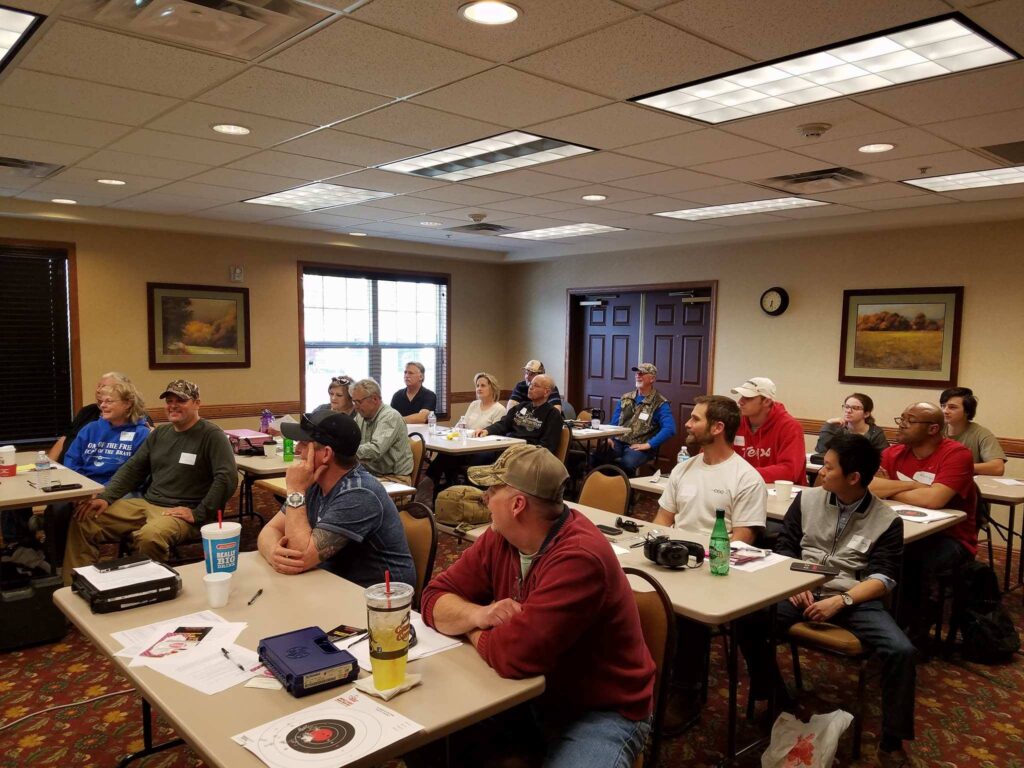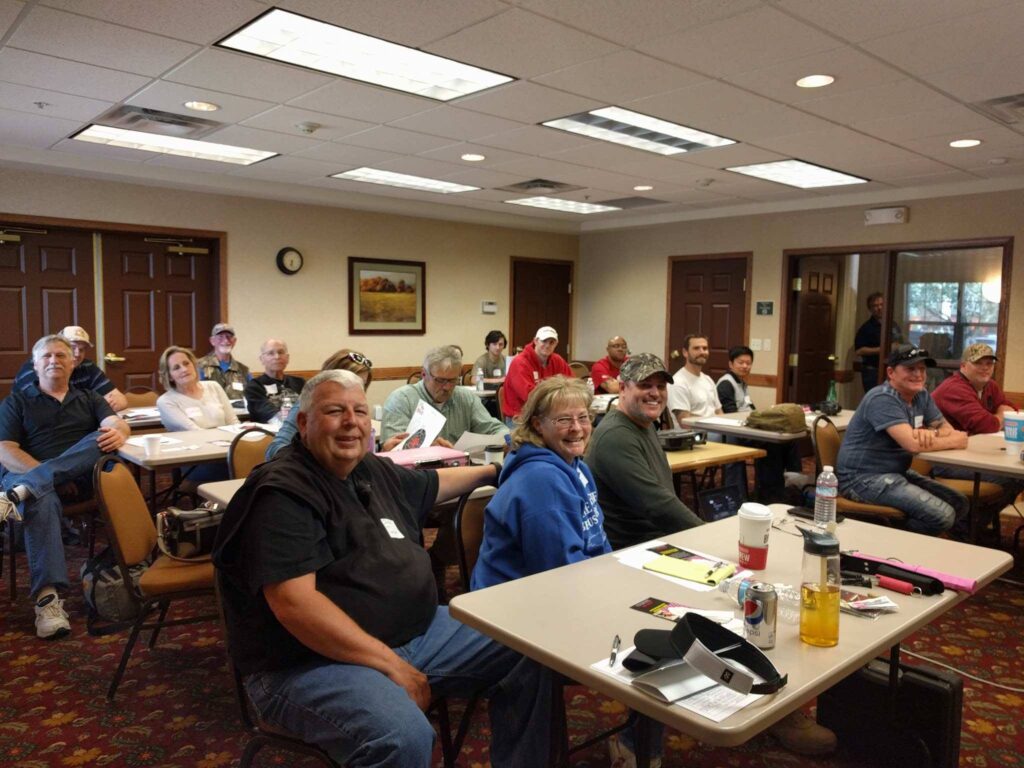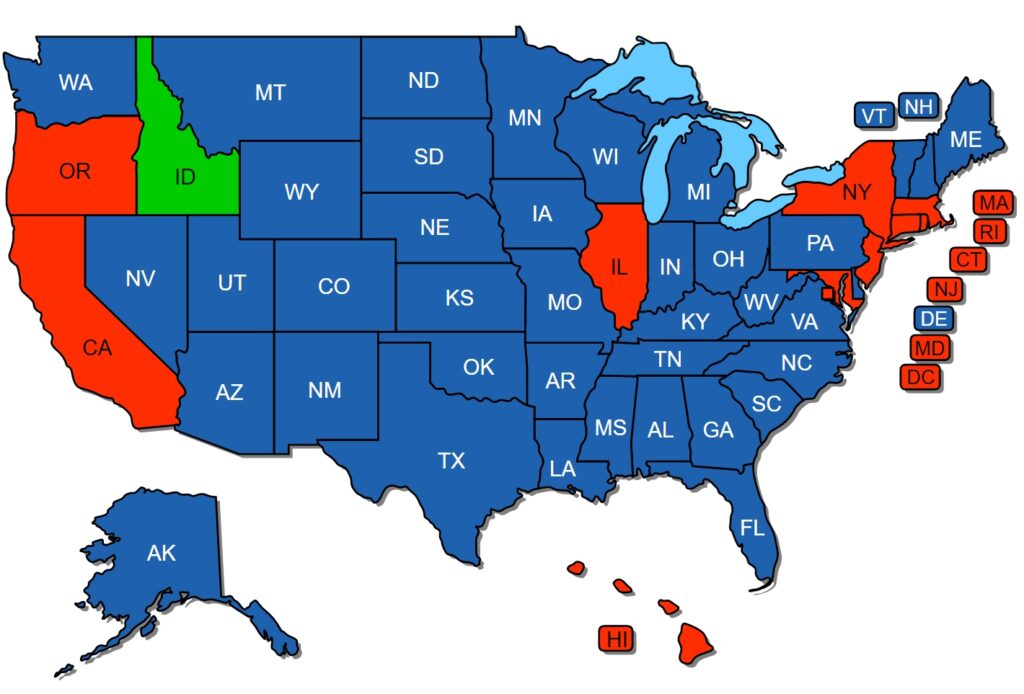About the Idaho Concealed Carry Class

The Idaho Concealed Carry Class comes in two versions: Idaho Standard Concealed Carry Class or the Idaho Enhanced Concealed Carry Class.
The Idaho Enhanced Concealed Carry license is the only one you should pursue.
The Idaho Enhanced Concealed Carry Class is one of the country’s strongest and most respected concealed carry licenses. Because of its strength, recognition, and training, the Idaho Enhanced Concealed Carry Permit is honored in 37 states nationwide.
A great amount of responsibility is instilled in the citizens of the United States when carrying a handgun. Idaho Concealed Carry Permit Holders are expected to answer to a higher standard. For this reason, we suggest attending the Idaho Class Concealed Carry Class. Concealed Carry holders must understand and obey federal, state, and local laws in their home state of Idaho and when traveling. For this reason, we recommend taking the Idaho Enhanced Concealed Carry Class.
Formal Training Requirements

The importance of attending an in-person Idaho Concealed Carry Class cannot be emphasized enough.
The standard Idaho Concealed Carry Class offers fewer states.
The standard Idaho Concealed Carry Class is essentially a Basic Pistol Course. There are no shooting requirements to apply to the state.
No checks and balances are in place when a state allows constitutional carry. Constitutional states allow any individual to carry without any training at all. When traveling in these other states, you have no idea if they have been properly trained to use firearms. Properly trained does not mean the person knows how to use a firearm. A properly trained individual knows when to use a firearm.
A formal Idaho Concealed Carry Class is necessary to understand when you can and cannot use a firearm to ensure your safety and the safety of your loved ones.
Idaho Reciprocity Map
With the recent ruling from the supreme court, more states are likely to accept the Idaho Enhanced Concealed Carry Permit. Get yours today!
Because of the level of training we provide, here are all the states you can apply for their concealed carry licenses:
- Idaho Enhanced Concealed Carry Weapons License (Idaho IECCW), you must attend the Idaho Enhanced Concealed Carry Class.
- Idaho Standard Concealed Carry Weapons License (Idaho CCW), you must attend a Basic Pistol Course or attend a standard Idaho Concealed Carry Class.
- Arizona Concealed Weapons Permit (CWP) – No Additional Training Required.
- Oregon License to Carry Handgun (LTC) – No Additional Training Required. Students need to apply in person at an Oregon Sheriff’s office.
- Utah Concealed Firearm Permit – Not additional states.
- Washington Concealed Pistol License – No additional States – Included in Idaho Enhanced License)

States you can carry with the resident* Idaho Enhanced Concealed Carry Weapons License
Note: Oregon allows residents of Idaho to apply for a non-resident Oregon Concealed Carry Permit – no additional training required.
Note: Utah and Arizona Licenses do not add additional states.
*Non-resident restrictions apply to some states.
Idaho Conceal Carry Class Curriculum
As mentioned earlier, the requirements for applying for an Idaho Concealed Carry Weapons License (CCW) are fairly easy to attain. A quick pistol safety class, a trip to the local sheriff’s office, and a few dollars buy you a standard Idaho Concealed Carry permit (provided you pass a background check).
The Idaho Concealed Carry Class (the Enhanced Version) requirements have much higher standards. This is because the license is honored in more states. The training regiment requires 6 hours of classroom training and requires 98 rounds of ammunition to be shot at the range.
It is up to Idaho Enhanced Concealed Carry Class Instructors to determine what is taught in their class and submit their lesson plan to their local sheriff’s office for approval. The lesson plan must meet or exceed Idaho state minimums.
Listed below are some of the topics we teach at Level 1 Firearms Training LLC, which are also the topics any conceal carry instructor should teach to ensure you receive a well-rounded education.
Idaho Concealed Carry Topics
- Basic Firearm Training Review
- De-escalation Techniques
- Idaho and the Law
- The Four Levels of Mental Awareness
- Reactions to an Attack
- Physical Reactions to an Attack
- Perceptional Changes to an attack.
- The Emotional Impact of a Defensive Shooting
- Precautions to Avoid a Confrontation
- When to Call the Police
- More…
The list is not exhaustive, but it should give you an idea of what to expect when you attend an Idaho Enhanced Concealed Carry Class.
Additional Concealed Carry Permits
Listed below are states many Instructors insist that you need to have in addition to your Idaho Enhanced Concealed Carry Weapons Permit. Many will bundle these additional permits so they can charge more than necessary.
Let’s compare the most popular out-of-state permits instructors try to sell you. Keep in mind, a standard Idaho concealed carry license will require some additional licenses. You would need the additional licenses because the standard Idaho Concealed Carry License does not cover as many states as the Idaho enhanced concealed carry license.
- Arizona – No additional states.
- Florida – No additional states.
- Oregon – Accepts Idaho Training, must make an appointment with the Sheriff
- Utah: No additional state.
This is a Two Day Course!
Why is this a 2-day course? Our Idaho Concealed Carry Class is the best Idaho concealed carry training you will receive. We want you to be properly trained when carrying a firearm in public; there are no shortcuts to carrying concealed properly.
Indoor ranges in Idaho do not accommodate outside instructors which makes no sense – we are literally bringing them, customers! We have chosen to utilize one of the several outdoor ranges in the Treasure Valley that like us bringing them customers. Indoor ranges are loud, really loud. You cannot hear the instructor while training and are extremely restrictive with what you can teach.
Indoor ranges do not accommodate drawing from holster nor do they allow movement on the range. Indoor ranges are loud, have long wait times on the weekends, and charge as much as 25/hr in some locations we train. We have chosen to utilize one of the several outdoor ranges so we can train you correctly without the need to rush you through the skill-building portion of the class. You learn in a safe, comfotable, and fairly quiet environment.
Outdoor ranges are extremely hot or cold in the late afternoons which distracts new students from concentrating. By shooting early in the morning the following day of class, students are fresh and ready to train for self-defense shooting skills.
Prerequisites:
— MUST BE 18 YEARS OLD —
- NONE. It is assumed you know how to use your gun. This is not a basic gun class.
- If you are new to guns: It is highly recommended that you attend formal gun training such as the Idaho Pistol Essentials 101 Course, or the Women’s Only Workshop Pistol 101 Course.
- Between 18 and 21 you will receive a standard Idaho Concealed Carry Permit. When you turn 21, it can be upgraded to the Idaho Enhanced Concealed Carry Weapons Permit.
Adherence to the primary safety rules must always be followed.
- Keep the Firearm Pointed in a Safe Direction.
- Keep the Firearm Unloaded Until Ready to Use.
- Keep Your Finger Off The Trigger Until Ready to Shoot.
- Know Your Target and Beyond.
- No Drugs, Alcohol, nor Cannabis are Allowed At The Range.
Equipment:
Day 1: Classroom – Saturday
- Notepads, pens, paper, highlighter.
- A personal revolver or pistol of any caliber, cased, secured, and free of ammunition.
- Strong-side Holster, Appendix Holser, or Holster Purse: Preferably the one you intend to use when you carry concealed.
- No Serpa Holsters Allowed
- Training Cartridges (Dummy Rounds): At least 5 Training Cartridges in the correct caliber are needed for this class.
- Can be found at local sporting goods stores or online.
- Suitable Eye Protection. This can be wraparound eyewear, polycarbonate lenses, or non-shattering prescription glasses.
- Suitable Ear Protection. We recommend electronic noise-canceling earmuffs, but earplugs are acceptable.
- Approxiament Length: 6 Hours
Day 2: Range Day – Sunday
- A personal revolver or pistol of any caliber, cased, secured, and free of ammunition.
- Strong-side Holster, Appendix Holser, or Holster Purse: Preferably the one you intend to use when you carry concealed.
- No Serpa Holsters Allowed
- Training Cartridges (Dummy Rounds): At least 5 Training Cartridges in the correct caliber are needed for this class.
- Can be found at local sporting goods stores or online.
- Suitable Eye Protection. This can be wraparound eyewear, polycarbonate lenses, or non-shattering prescription glasses.
- Suitable Ear Protection. We recommend electronic noise-canceling earmuffs, but earplugs are acceptable.
- Range Fees, if any, are the student’s responsibility and are not included with the course registration.
- Check the weather report on the day of class and bring appropriate clothing.
- Wear appropriate clothing for the weather.
- Bug Spray for the critters.
- No V-Neck Shirts or Open-toed shoes.
- Head covering if necessary.
- Sunscreen or jackets when needed.
- Suitable and Comfortable Footwear, no open-toed shoes are allowed.
- Beverages for Hydration.
- Bring snacks for breaks. Snacks – Are allowed at the range – snacks are not allowed on the firing line.
- 150 Rounds of Quality, store-bought ammunition (no tracers, steel, or reloads allowed).
Optional but highly recommended:
- Knee Pads – for range day and private shooting drills afterward.
- Small Personal Canopy during the summer season when temperatures are expected to be high.
- Folding chair and a small folding table to create your workstation (bench).
- Approxiament Length: 4 Hours.
NO LIVE AMMUNITION IN THE CLASSROOM
